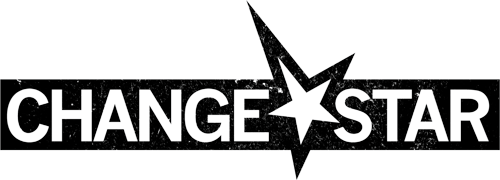We’ve recently developed a number of services for our clients that allow us to work with them in a much more strategic and channel-neutral way. Usually this takes the form of a workshop or seminar focussing on how digital can be integrated into their communication mix and working practise. A good example of this was a one day digital workshop with our long standing client QEF – Queen Elizabeth’s Foundation for Disabled People.
The ‘Digital Day’ workshop was an intensive one day collaborative session with staff from QEF and ChangeStar looking specifically at how digital communications are co-ordinated and deployed across the organisation. Our agreed aim for this project was to implement a channel neutral approach, which combined data and digital activity across all of QEF‘s departments; Communications, Fundraising and Events.
Our view is that it is essential to break the artificial demarcation between internal departmental structures to achieve a single united ‘donor-journey lead’ approach – the theory being that all aspects of communication from an organisation are components in a donor journey and shouldn’t be compartmentalised into channels that only make sense internally to an organisation.
Hard-won budgets, domains of perceived control or just long held prejudices about culture and working practices (“those comms people always get the best budgets but never bring any money in…”) can make the crossing of internal divisions within organisations difficult. Yet despite this, if a charity wants to be a successful 21st Century fundraising organisation it must re-organise itself to reflect the ongoing changes in communication channels and donor behaviour. In this case, however, QEF were more than happy to work collaboratively across departments.
The session was started off by mapping out all of the digital properties of the organisation (websites, social media presences, email platforms and soon) and visualising how they are interconnected, who was responsible for them, how they were planned, how data was stored and shared. This visualisation helped us to determine how the structure could be made more efficient from a purely logistical as well as technical point of view.
The next exercise was looking at Data; getting a better picture on demographic variations, responses to different channels and soon. One of the most important findings of these type of exercises is to realise the potential for recruiting donors outside of the organisation’s standard practice. Many charities tend to be very conservative about their audience and repeat year after year the same tactics with the same channels – understandably so because fundraising is all about numbers and it makes sense to repeat what is known to work. However, we also know that we are at the beginning of a sea-change in donor behaviour as a generation used to interacting and donating to charities through other channels (specifically digital) move into the peak donor age over the next decade. Charities need to be able to analyse, understand and react to this change or face mining a continually narrowing seam as their traditional donors age.
In QEF‘s case we analysed potential data collection opportunities and also looked at opportunities to engage a new developing audience on the various social media platforms, email, online registrations and subscriptions. And, once this audience was identified we developed a simple comms plan to extend our reach and engage this audience in the donor journey.
Alongside this strategic type work we also ran an audit on the charity’s digital properties and activities (websites, email, social media, data segmentation, etc) and looked at how best practice could be applied to make the existing communication more efficient. This looked at areas such as:
- Accessibility – are the websites compliant with disabled accessibility guidelines? (more here: http://www.w3.org/TR/WAI-WEBCONTENT/)
- Responsiveness – have the websites been responsively designed so that they work well on multiple devices? (https://en.wikipedia.org/wiki/Responsive_web_design)
- Email – what are the best ways to write, send and measure email campaigns
- Communications – how to develop an annual communications plan without being disruptive to ongoing everyday work and using the resources available.
Finally, at the end of what was an intensive day we created a prioritised list of action points that allowed the client to start working on practically implementing some of these findings in an organised way – without having to completely rebuild and change everything overnight!
“Simon helped us to identify the different touch points in which we could collect data, to map out a strategy for digital contact to different streams and also applying a “bite size” approach so it’s all manageable. Lots to do now but definitely going in the right direction!”
Hanne Widmer, Direct Marketing Manager, Queen Elizabeth’s Foundation for Disabled People
If you are interested in any of these topics, please get in touch and we can discuss how ChangeStar can help you in multi-channel digital Fundraising and campaigning.
Simon Crab
Creative Director, ChangeStar

